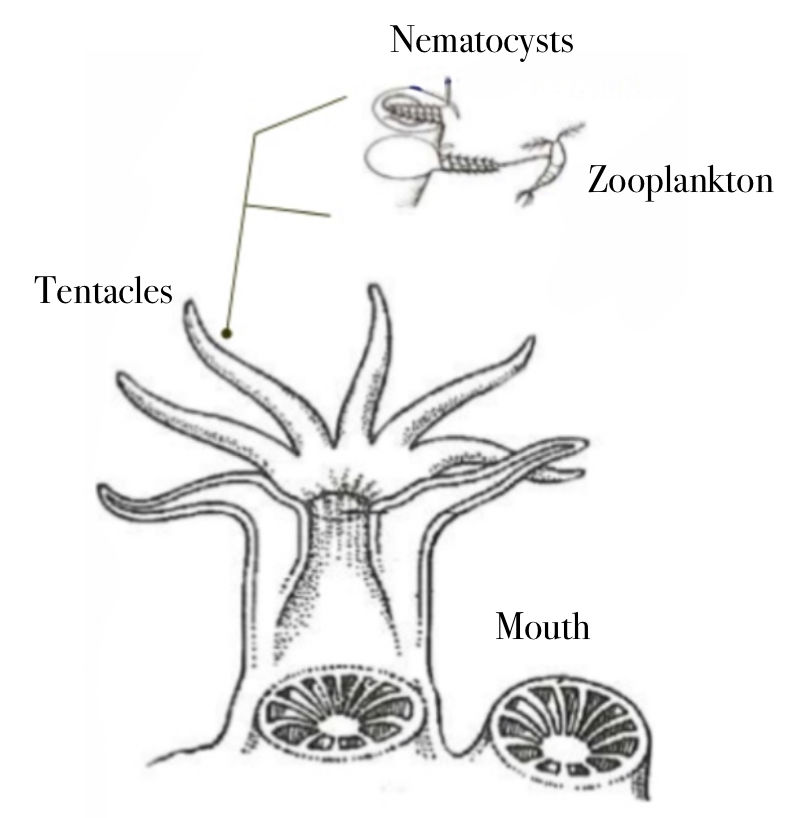What is coral made of, How does it form and Can it reproduce?
- gage egan

- Aug 15, 2020
- 4 min read

With the basics outlined of what coral needs to grow and survive in another blog post ‘Where can coral be found’ we now need to understand what coral is, the difference between the species, its rate of growth and other vital information into its survival.
As to what coral actually is often causes some confusion as to what category it falls under is it a plant, animal or mineral, yet coral in the scientific community falls into the classification of Cnidaria Phylum meaning they are a relative of the jellyfish and anemones which mean that they are apart of the animal kingdom under the aquatic/ marine genius with their distinguishing feature its cnidocytes, specialised cells that they use mainly for capturing or gathering food. As with many other types of animals, different species of coral are found in different habitats and different locations around the world each with their evolutionary differences.

For example the most common difference between coral is that there is two types hard or soft, Hard corals, also known as scleractinian or stony coral more commonly, produce a rigid skeleton made of calcium carbonate in a crystal like form called aragonite. Hard corals are the primary of reef-building corals. Colonial hard corals, consisting of hundreds to hundreds of thousands of individual polyps which are soft-bodied organisms that at their base are hard with a protective limestone skeleton called a caliche which when cemented together by the calcium carbonate 'skeletons' they secrete. Hard corals that form reefs are called hermatypic corals. Where as with Soft coral, also known as Alcyonacea or flowering coral, do not produce the same rigid calcium carbonate skeleton as hard coral and so they can’t form reefs, though they are present in a reef ecosystems. Soft corals are also mostly colonial; what appears to be a single large organism is actually a colony of individual polyps combined to form a larger structure. Visually, soft coral colonies tend to resemble more of a trees, bushes & fans appearance.
As the aim of this project is to promote the growth of coral then now how it natural grows is critical for understanding how this could be stimulated external or for how long a scaffold structure would have to last before the coral on it becomes self-sustaining.
one things to consider is that there is a difference in the rate in which the two types of coral grow, as hard coral aka stony coral is the foundation of a coral reef colony by laying down layers of calcium carbonate or creating branching like forms to increase it’s height and length by as much as 10cm within a year, yet this is not the same for all hard corals as some species are more bulky and resemble more of a dome or plate like form that often grow at a much slower rate of 0.3 to 2cm per year. Where as for soft coral it’s rate of growth is greater with it being made of a more flexible substance it able to grow 4 to 12cm per year.

My next big factor is their food source, if the nursing coral on a scaffold is to survive then knowing how they feed and what they feed on is crucial for making sure they acclimate to their new environment on the Coral Skeleton Scaffold, Most reef-building corals have a unique partnership with tiny algae called zooxanthellae. The algae live within the coral polyps, using sunlight to make sugar for energy. This energy is transferred to the polyp, providing much needed nourishment. In turn, coral polyps provide the algae with carbon dioxide and a protective home. Corals can also feed by catching tiny floating animals called zooplankton. At night coral polyps come out of their skeleton exterior to feed, stretching their long, stinging tentacles to capture critters that are floating by. Prey are pulled into the polyps’ mouths and digested in their stomachs.
To be successful in creating a self-sustainable coral scaffold then being aware how coral reproduces is crucial as well so that no part of the design impacts on this and to see if the modals could be modified in some form to potential increase the chances. coral can reproduce in two ways as three-quarters of all stony coral species are broadcast spawners.
Along many reefs, coral spawning occurs as a coordinated event, when many coral species in an area release their eggs and sperm at around the same time. The timing of a broadcast spawning event is very important because corals cannot move to make reproductive contact with each other and as colonies may be separated by wide distances and vast amount of oceans, the release of sperm and eggs must be precisely timed, and usually occurs in response to multiple environmental cues, so allowing plenty of space for this event is vital if the coral colonies are to thrive.
The second reproduction process is used by the remaining quarter of the coral species know as brooders, Brooding species generally disperse their larvae shorter distances from the mother colony than broadcasters. They generally have high success in securing new larvae into established colonies, but many of these species reach only small colony size and thus do not contribute much to the overall growth of a reef.




Comments